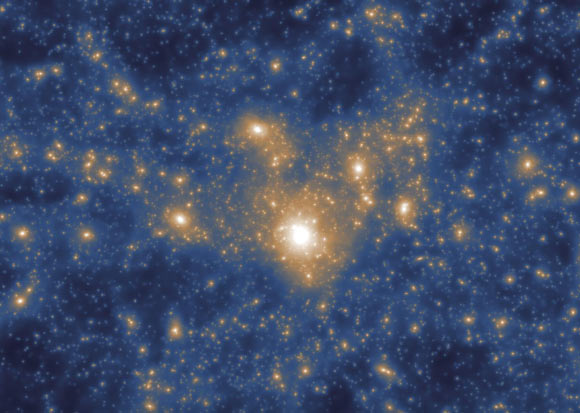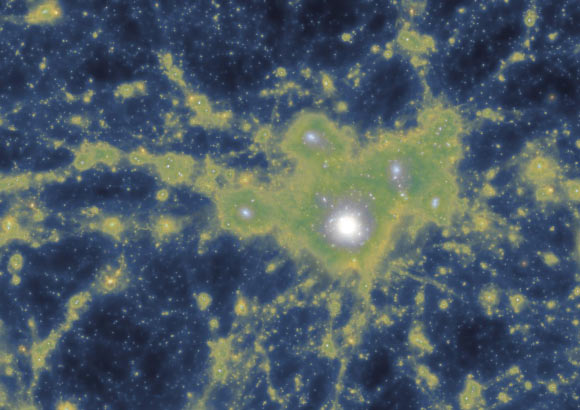Study: Massive Galaxies Grow Large by Eating Their Smaller Satellites | Astronomy – Sci-News.com
In a new study, an international team of astronomers led by ARC Centre of Excellence for All Sky Astrophysics in 3 Dimensions (ASTRO 3D) combined data from the Multi-Object Spectroscopic Emission Line (MOSEL) survey with a cosmological modeling program in order to glimpse the forces that create massive galaxies.

Simulation showing distribution of dark matter particles around a galaxy. Image credit: Gupta et al / ASTRO 3D / IllustrisTNG Collaboration.
“By analyzing how gases within galaxies move, it is possible to discover the proportion of stars made internally — and the proportion effectively cannibalized from elsewhere,” said ASTRO 3D’s Dr. Anshu Gupta, lead author of the study.
“We found that in old massive galaxies — those around 10 billion light years away from us — things move around in lots of different directions.”
“That strongly suggests that many of the stars within them have been acquired from outside. In other words, the big galaxies have been eating the smaller ones.”
Because light takes time to travel through the Universe, galaxies further away from the Milky Way are seen at an earlier point in their existence.
Dr. Gupta and colleagues found that observation and modeling of these very distant galaxies revealed much less variation in their internal movements.
“We then had to work out why ‘older,’ closer big galaxies were so much more disordered than the ‘younger,’ more distant ones,” said ASTRO 3D’s Dr. Kim-Vy Tran, co-author of the study.
“The most likely explanation is that in the intervening billions of years the surviving galaxies have grown fat and disorderly through incorporating smaller ones. I think of it as big galaxies having a constant case of the cosmic munchies.”

Simulation showing distribution of dark matter density overlayed with the gas density. This image cleanly shows the gas channels connecting the central galaxy with its neighbors. Image credit: Gupta et al / ASTRO 3D / IllustrisTNG Collaboration.
The astronomers ran their modeling on a specially designed set of simulations known as IllustrisTNG, a multi-year, international project that aims to build a series of large cosmological models of how galaxies form.
“The modeling showed that younger galaxies have had less time to merge with other ones,” Dr. Gupta said.
“This gives a strong clue to what happens during an important stage of their evolution.”
The study was published April 9, 2020 in the Astrophysical Journal.
_____
Anshu Gupta et al. 2020. MOSEL Survey: Tracking the Growth of Massive Galaxies at 2 < z < 4 Using Kinematics and the IllustrisTNG Simulation. ApJ 893, 23; doi: 10.3847/1538-4357/ab7b6d






